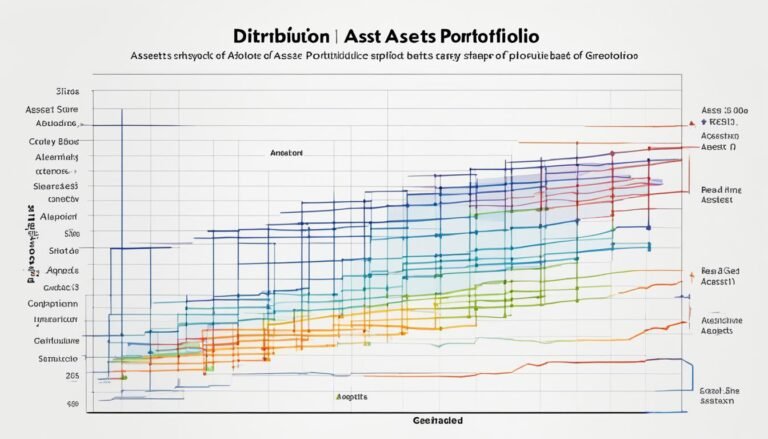Conducting Market Analysis: Insights and Strategies
Market analysis stands as the cornerstone of informed decision-making for businesses across industries. From understanding consumer preferences to evaluating competitive landscapes, the process uncovers pivotal insights essential for strategic growth.
By delving into data collection methodologies and trend analysis techniques, companies gain a nuanced understanding of market dynamics. However, the true essence lies in how these insights translate into actionable strategies. The ability to foresee market opportunities and navigate challenges through thorough analysis can often be the differentiating factor between business success and stagnation.
Key Takeaways
- Market analysis guides strategic decisions by understanding trends, consumer behavior, and competition.
- Data collection methods like surveys and observational research provide insights into market trends and consumer preferences.
- Observational research techniques like ethnographic studies and behavioral mapping offer nuanced details on consumer behavior.
- Strategic analysis involves identifying market opportunities, competitive analysis, SWOT analysis, and implementing actionable strategies.
Importance of Market Analysis
Market analysis plays an essential role in guiding strategic decision-making by providing valuable insights into market trends, consumer behavior, and the competitive landscape. Competitive intelligence gathered through market analysis allows businesses to understand their competitors' strategies, strengths, and weaknesses, enabling them to identify opportunities for differentiation and growth. By analyzing consumer preferences, businesses can tailor their products or services to better meet the needs and desires of their target market, increasing customer satisfaction and loyalty.
Understanding consumer preferences through market analysis involves collecting data on purchasing behavior, demographics, psychographics, and buying patterns. This information helps businesses anticipate market demands, develop effective marketing strategies, and innovate products that resonate with their target audience. Furthermore, market analysis enables businesses to stay ahead of industry trends, identify emerging opportunities, and mitigate potential risks, ensuring a competitive edge in the market.
To summarize, market analysis is an essential tool for businesses seeking to make informed decisions, drive growth, and achieve sustainable success.
Data Collection Methods
Utilizing surveys for data collection and employing observational research techniques are pivotal methods to gather valuable insights for market analysis.
Surveys offer structured data from a selected group, allowing for quantitative analysis, while observational research provides in-depth qualitative information by observing consumer behavior in natural settings.
These methods serve as essential tools in understanding market trends, consumer preferences, and competitive landscapes for informed strategic decision-making.
Surveys for Data
When conducting market analysis, utilizing surveys for data collection is an important method for gaining valuable insights into consumer preferences and behaviors. Surveys can provide essential information for businesses to make informed decisions.
To assure the effectiveness of surveys, consider the following key points:
- Survey Design: Crafting well-structured surveys to elicit relevant responses.
- Response Rates: Monitoring and optimizing response rates for higher data quality.
- Sampling Techniques: Employing proper sampling methods to represent the target population accurately.
- Bias Detection: Identifying and minimizing biases in survey responses for reliable data analysis.
Observational Research Techniques
A fundamental approach in market analysis involves employing observational research techniques as critical data collection methods to gain in-depth insights into consumer behavior and preferences. Ethnographic studies, which involve immersing researchers in the consumers' environments, and participant observation, where researchers participate in activities alongside the subjects, are valuable methods. Behavioral mapping, which visually represents where and how consumers act in a particular space, and shadowing techniques, where researchers follow individuals throughout their daily routines, are also important for understanding consumer habits and preferences. By utilizing these observational research techniques, businesses can uncover nuanced details that are often missed through other data collection methods, providing a thorough understanding of consumer behavior.
| Observational Research Techniques | Description | Benefits |
|---|---|---|
| Ethnographic Studies | Immersion in consumer environments | Deep understanding of consumer lifestyles |
| Participant Observation | Researchers participate in activities with subjects | Enhanced empathy and insight into behaviors |
| Behavioral Mapping | Visual representation of consumer actions in a space | Identifying patterns and trends in behavior |
Trend Analysis Techniques
An examination of trend analysis techniques reveals valuable insights into market dynamics and opportunities for strategic decision-making. Trend analysis involves the use of statistical modeling and forecasting methods to identify patterns and predict future market movements.
Here are four key techniques that can enhance your trend analysis process:
- Moving Averages: Calculating moving averages helps smooth out fluctuations in data, making it easier to identify trends over time.
- Exponential Smoothing: This technique assigns exponentially decreasing weights to older data points, giving more importance to recent observations in predicting future trends.
- Seasonal Adjustment: By removing seasonal patterns from the data, analysts can focus on understanding the underlying trends and make more accurate forecasts.
- Time Series Decomposition: Decomposing a time series into its trend, seasonal, and residual components allows for a deeper understanding of the various influencing factors driving market changes.
Identifying Market Opportunities
Understanding market trends and conducting a thorough competitive landscape evaluation are vital steps in identifying lucrative market opportunities.
By analyzing market trends, businesses can anticipate shifts in consumer behavior and preferences, enabling them to tailor their strategies accordingly.
Additionally, evaluating the competitive landscape provides valuable insights into areas where a company can differentiate itself and gain a competitive advantage.
Market Trends Analysis
In today's rapidly evolving market landscape, discerning market trends is essential for identifying lucrative opportunities for strategic growth and competitive advantage.
- Shifts in consumer behavior towards online shopping.
- Increasing demand for sustainable products.
- Adoption of dynamic pricing strategies by industry leaders.
- Growth of personalized marketing approaches leveraging big data analytics.
Understanding these market trends not only allows businesses to align their offerings with consumer preferences but also enables them to stay ahead of the competition.
Competitive Landscape Assessment
Amidst the evolving market trends highlighted earlier, a thorough Competitive Landscape Assessment is imperative for businesses seeking to identify and capitalize on emerging market opportunities.
To effectively navigate this landscape, businesses must conduct detailed competitor analysis to understand market share and positioning. By evaluating industry benchmarks, companies can gauge their performance against competitors and uncover areas for improvement.
This analysis provides valuable insights into the strengths and weaknesses of key players in the market, enabling businesses to refine their strategies and differentiate themselves effectively. Understanding the competitive landscape is essential for identifying gaps in the market, anticipating industry trends, and positioning oneself strategically to seize emerging opportunities.
Competitive Analysis Strategies
Analyzing the competitive landscape is essential for developing effective market strategies that capitalize on opportunities and mitigate risks. To guarantee a thorough competitive analysis, consider the following key strategies:
- Industry Benchmarks: Utilize industry benchmarks to assess where your competitors stand in comparison to the market average. This provides valuable insights into areas of strength or weakness that can be leveraged in your strategy.
- Competitor Profiling: Create detailed profiles of your competitors, including their market share, target demographics, pricing strategies, and product offerings. Understanding these aspects can help identify competitive advantages and areas for differentiation.
- SWOT Analysis: Conduct a SWOT analysis to identify your competitors' strengths, weaknesses, opportunities, and threats. This structured approach helps in understanding how your business can position itself effectively in the market.
- Market Positioning: Evaluate your competitors' positioning strategies to determine how you can differentiate your brand and offerings to attract target customers effectively.
SWOT Analysis for Business
Conducting a thorough SWOT analysis is a foundational step in strategic business planning, providing valuable insights into internal strengths, weaknesses, external opportunities, and threats that can impact organizational performance and competitive positioning. A SWOT analysis helps businesses identify areas where they excel and where they need improvement, as well as external factors that could hinder progress or present new avenues for growth. Below is a simplified representation of a SWOT analysis table:
| Strengths | Weaknesses | Opportunities |
|---|---|---|
| Internal factors | Internal factors | External factors |
| Advantages | Limitations | Market trends |
| Core competencies | Areas for improvement | Industry developments |
| Threats | ||
| External factors | ||
| Competition | ||
| Changing regulations | ||
Analyzing strengths and weaknesses allows businesses to leverage internal capabilities effectively, while identifying opportunities and threats helps in anticipating and mitigating external challenges. This structured approach enables organizations to make informed decisions and develop strategic plans that align with their goals and market dynamics.
Market Segmentation Insights
Exploring market segmentation insights is essential for businesses aiming to understand and target distinct consumer groups effectively. To investigate deeper into this critical aspect of market analysis, businesses can utilize various strategies and techniques to refine their approach:
- Customer Profiling Strategies: Developing detailed profiles of different customer segments based on demographics, behaviors, and preferences.
- Market Targeting Techniques: Identifying the most attractive segments to focus on based on factors like size, growth potential, and compatibility with the company's offerings.
- Behavioral Segmentation: Dividing the market based on patterns of behavior such as purchasing habits, product usage, and brand interactions.
- Psychographic Analysis: Understanding consumer segments through their values, beliefs, interests, and lifestyles to tailor marketing efforts effectively.
Implementing Actionable Strategies
To effectively implement actionable strategies derived from market segmentation insights, businesses must prioritize alignment between identified consumer segments and targeted marketing initiatives. Strategy execution plays a critical role in translating market analysis into tangible results. By focusing on actionable insights, companies can guarantee that their strategies are not only well-informed but also capable of driving meaningful outcomes.
One key aspect of implementing actionable strategies is the need for clear and measurable goals. Businesses should define specific objectives that align with the identified consumer segments to guide their marketing efforts effectively. Additionally, continuous monitoring and evaluation of the strategies in place are essential to make necessary adjustments and optimize performance.
In addition, leveraging data analytics and technology can enhance the execution of actionable strategies. By harnessing the power of data, businesses can gain deeper insights into consumer behavior and preferences, enabling them to tailor their marketing initiatives more effectively. Overall, successful strategy execution hinges on the ability to transform market segmentation insights into targeted actions that resonate with the intended audience.
Conclusion
At the end, market analysis is a pivotal aspect of business strategy, providing valuable insights and opportunities for growth.
Despite potential challenges in data collection and analysis, implementing actionable strategies based on thorough market analysis can give businesses a competitive edge.
By understanding market trends, identifying opportunities, and conducting competitive analysis, businesses can make informed decisions that drive success.
Anticipated objections regarding the time and resources required for market analysis can be overcome by emphasizing the long-term benefits and return on investment.







